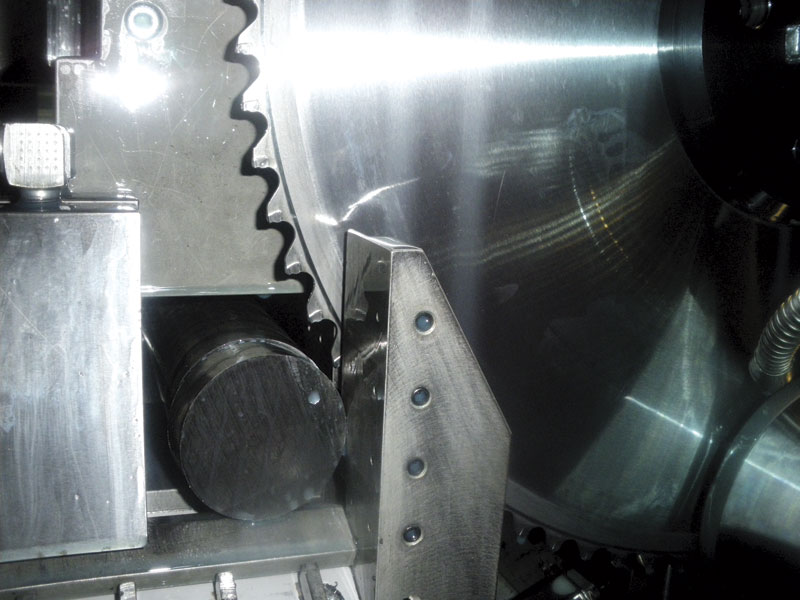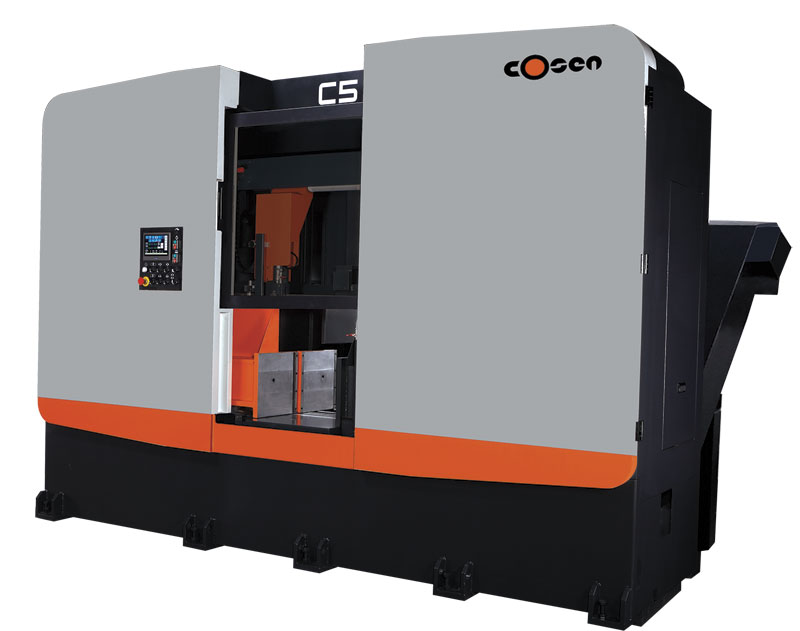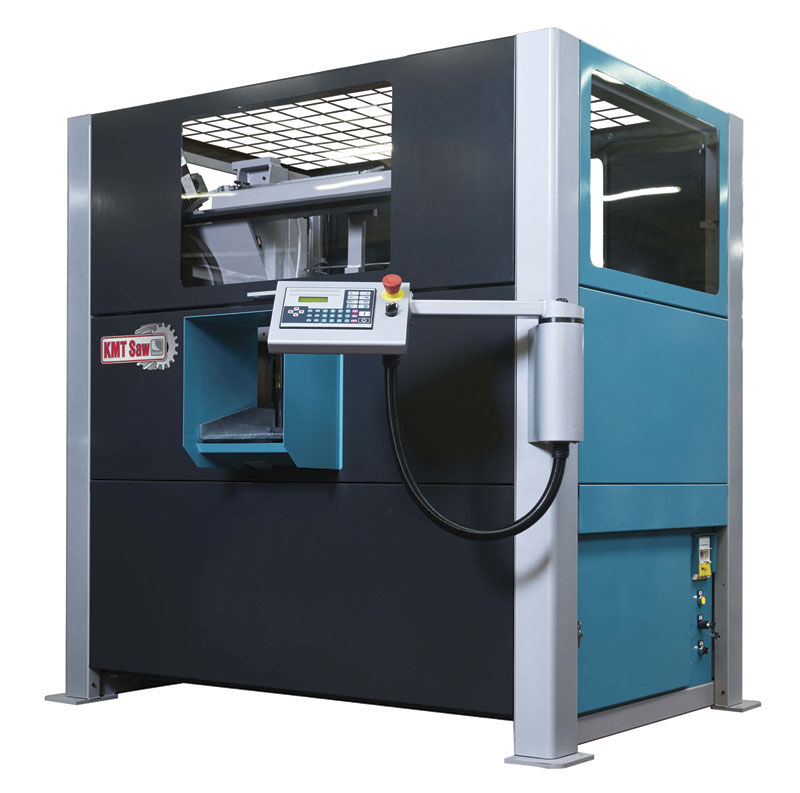by Mary Scianna
Blade failure can have a catastrophic impact on your sawing operations
The sawing operation is arguably one of the most crucial elements in a fabrication shop. Problems in the process can create bottlenecks in downstream operations, introduce costly production inefficiencies, and delay customer deliveries.
Whether you’re working with circular cold saws or band saws, the rule of thumb is the same: maintain blade life to eliminate catastrophic problems down the line.
Maintaining that saw blade life is dependent on a number of factors: the type of saw you use, the condition of the saw, the application (size of production runs, speeds and feeds), and the materials you need to cut (alloy type, material thicknesses).
Circular cold saws
As many know, circular cold saws are well suited to high production sawing of small diameter materials such as mild steel, tool steel and cold rolled steel. They are best suited to large runs of the same type of materials. And while they’re typically more expensive than band saws, their biggest advantage is that blades deliver longer life, cut faster and can be sharpened a number of times.
“You can cut until the blade is dull, have it resharpened and do that about 40 or 50 times before it’s too small,” says Scott Oliver, cold saw product manager for Scotchman Industries. “That’s a huge cost advantage.”
Suppliers advise that circular cold saw blades should be resharpened on saws that secure an even tooth pitch–the distance from tooth tip to tooth tip on a blade. And some suggest resharpening with coolant to improve blade life.
Blade failure often occurs on cold saws for a simple reason: not following recommended guidelines. Some shops may take shortcuts to reduce costs, but Oliver says that can lead to costly problems.
“With cold sawing, you have to consider the surface feed per minute of the saw blade, the pitch of that saw blade, the tooth configuration and the down feed rate through the material. What makes the smoothest cut with the least amount of vibration or chatter will give you the best cut, but if don’t match the right parameters, such as the right rpms for the correct feeds and speeds, you can dull the blade prematurely.”
 The ability to change out a blade is an important aspect of machine consideration, adds Joe Suydam, sales and marketing for Behringer Saws. Many shops typically assign one operator to handle the saws so you want to ensure that operator understands how the machine cuts, how to change the blade, and what to look for in assessing problems.
The ability to change out a blade is an important aspect of machine consideration, adds Joe Suydam, sales and marketing for Behringer Saws. Many shops typically assign one operator to handle the saws so you want to ensure that operator understands how the machine cuts, how to change the blade, and what to look for in assessing problems.
“The biggest change we’ve seen is customers who want the speed of cold saws but don’t have the full knowledge to run cold saws, and that becomes a big learning curve. You have to understand what the different sounds of a cut mean, whether good or bad, and the colour of chips that are being produced can provide great information. Once you learn it though, you have the ability to run lights outs without an operator present at all times. There is typically a more upfront cost with high speed circular cold saws, but the speed, finish and precision you achieve will make up for that cost very fast.”
One of the problems Suydam sees is that people typically like to push saws as hard as they can. “If an operator is pushing the higher limits of cutting, you’re going to end up spending a lot of money on replacement blades.”
To address customers’ needs with the technology available, one of Behringer’s goals is to create band saws that cut as fast as cold saws and create cold saws that cut as fast as shears. “There have been a lot of improvements in the mechanics of saws, such as going to ballscrews instead of hydraulic to provide more precise measurements,” says Suydam. Not only does this provide precise measurements, but more importantly, it provides precise movement, which equates to better quality of cut, and prolonged blade life, all the while cutting faster.”
Manufacturers need to keep in mind that circular cold saw blades are typically less forgiving than band saw blades, which makes them more of a challenge if you’re pushing the cutting speed limits.
“A rule of thumb is that blades with six to twelve teeth engaged in the material at one time is good with band saws opposed to three to five teeth at one time for circular cold saws. While cold saws are less forgiving, you get the cutting speeds. As a rough example, you can cut a one inch part in one second with a high speed carbide circular saw and it may take 15 seconds with a band saw.”
Band saws
If your sawing operation handles hard alloys like tool steel, nickel, titanium or high nickel alloys, and your production runs are small to medium, you’re likely using band saws. Unlike blades used on cold saws, band saw blades can’t be resharpened and are, essentially, throw away blades once their life is spent. If blades are being damaged by incorrect use, frequent replacements can add significant costs to your sawing operations.
Blade selection is critical because there are a variety of blade types with different geometries and special coatings that offer a range of benefits.
There are three major types of band saw blades: carbon steel, bi-metal and carbide-tipped. “The carbon band saw blade market for metal cutting is small and declining. It’s dated technology, typically priced low and you won’t get high levels of productivity,” explains Daniel Fernandes, brand manager for Lenox.
Bi-metal blades combine two types of metal welded together to provide a harder but more flexible blade than a carbon one for longer blade life, faster cutting speeds and better part finishes.
“Bi-metal makes up the majority of blades for band saws but a sizeable and growing market is the carbide tipped blade, which offers the highest level of production,” adds Fernandes. “You still have a flexible steel backing, but usually you have higher alloy steel content for the hard to cut metals. You have more complex tooth geometries on these blades and they’ll give you the longest blade life and fastest cut. They also deal better with hard materials like titanium amd they’re also good for aluminum, which wears out bi-metal blades quickly. With the carbide-tipped blades, wear is much slower and they’re much more resistant to aluminum sticking to the tooth on the blade.”
 Fernandes cites an example to illustrate the advantage of carbide-tipped band saw blades. “A metalworking shop is cutting an 8 in. round of CP titanium on a Hydmech saw. While the bi-metal band saw blade can run at 120 fpm with a feed rate of 0.53 ipm, the carbide blade runs at 320 fpm with a feed rate of 3.11 ipm. By pushing the carbide blade at a higher speed and feed rate, the shop is able to make the cut 13 minutes faster than the comparable bi-metal blade. In an eight hour shift, that translates into 160 more parts when you use the carbide band saw blade.”
Fernandes cites an example to illustrate the advantage of carbide-tipped band saw blades. “A metalworking shop is cutting an 8 in. round of CP titanium on a Hydmech saw. While the bi-metal band saw blade can run at 120 fpm with a feed rate of 0.53 ipm, the carbide blade runs at 320 fpm with a feed rate of 3.11 ipm. By pushing the carbide blade at a higher speed and feed rate, the shop is able to make the cut 13 minutes faster than the comparable bi-metal blade. In an eight hour shift, that translates into 160 more parts when you use the carbide band saw blade.”
The type of materials used to manufacture blades, tooth geometries and coatings impact blade performance and blade life. “Blade manufacturers are coming out with coated blades,” says Michael Finklea, Cosen Saw’s director of sales and marketing for North America.
The technology behind designing blades has changed, adds Finklea. “There are different angles being ground on the teeth and there’s a science behind how they’re ground and the coatings they’re using and we’re making machines that can better handle this new generation of blades.”
 For example, blade entry and exit have the biggest impact on blade life. These processes put a lot of pressure on the blade and if you’re operating at high speeds, blades can deteriorate or fail quickly.
For example, blade entry and exit have the biggest impact on blade life. These processes put a lot of pressure on the blade and if you’re operating at high speeds, blades can deteriorate or fail quickly.
Saw manufacturers like Cosen and Behringer have incorporated features into the saws that allow for controlled ramp feeds and speeds.
Blade manufacturers are addressing this too, says Matthew Lacroix, director of marketing at Lenox. “A band saw blade has a sharp tooth and if you go into the cut quickly, the tooth may chip or fracture. Typically what people do is run it for a period of time at a slower speed to break in the blade. This honing takes the sharp edge off the tooth and avoids breakage. What we’re looking at is having a sharp tooth pre-honed so you can go at 100 per cent of the speeds and feeds, improve efficiency and extend blade life. And, of course, eliminate the need for the slow break-in process.”
While band saws are typically used in small to medium sized operations some builders have developed them for high volume production environments. One example is Kalamazoo Machine Tool’s new DC12A-NC automatic double column band saw. The machine is programmable and able to execute serial cutting of various lengths and quantities, and store the jobs for easier and faster future setups. The saw features the company’s XSmart CNC operating system that allows entry of up to ten jobs to be memorized. SMT
